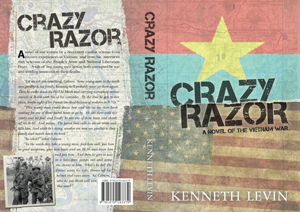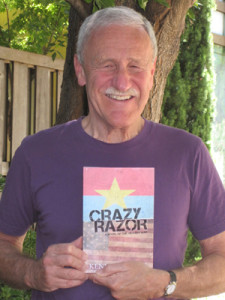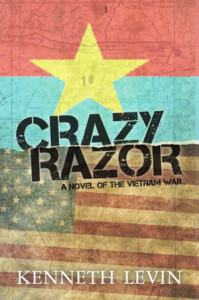Many terms come to mind about young children who exhibit advanced skills beyond their years; gifted, wunderkinder, whiz-kids, geniuses, and child prodigies. There are swirling controversies about the age that defines a prodigy, but all agree it is someone who, at a very early age, develops memory capacity for one or more skills at a level far beyond the norm for their age. Those who are gifted in many subjects, but especially in mathematics, is suggested that they think in terms of long-term working memory (LTWM) capable of holding relevant information for extended periods of time.
Among those gifted beyond their years were Amadeus Wolfgang Mozart who composed his first classical piece at five, and Beethoven who understood the intricate fundamentals of music about the same age. Today pint-sized five-year old Tsung Tsung from Hong Kong plays classical music like a seasoned concert pianist, performing Korsakov’s ‘Flight of the Bumblebee’ so nimbly, and with such tiny fingers, that even the late Van Cliburn would have wept. This diminutive violinist, who cannot tie her own shoelaces, brings audiences to tears.
Adolescent mathematicians stunned teachers in the 18th century with advanced knowledge of math, long before the age of technology. Today students compete in international competitions displaying their incredulous skills; understanding advanced physics and mathematical capabilities beyond the norm.
One such 14-year old, Dorris Eaton Preparatory School graduate, Varun Jain of Danville, recently achieved the perfect SAT score of 2400. His father, Doctor Vivek Jain, told me that he had scored a high 2300 in the 7th grade, and Johns Hopkins University awarded him a scholarship as the highest middle school scorer in the Centre for Talented Youth Program’s 33-year history. The CTY is a non-profit organization for identifying and developing talents of the most promising K-12 students, helping them fulfill the University’s mission of preparing future contributions to the world.
Varun never practiced to sit for the SAT; he casually decided to take it in the 8th grade and scored the perfect 2400. For a 14-year, not yet in high school, this is very rare, and at this writing is thought to be the first to do so. A tiny fraction of the 1.6 million college-bound high-school students nationwide achieve the perfect score of 2400, and only after tutoring, grueling study and practice.
Varun also attained a perfect National Science League Examination score, and scored in the top 1% in the American Mathematics Contest at 8th and 10th grade levels, and the American Invitational Mathematical Examination.
I have known of Varun since kindergarten; my grandson Nicholas Venezia was in the same class at Dorris Eaton. When I saw his mother, Doctor Vinita Jain again at graduation, I heard that Varun and his brother Vishal, both sitarists, were performing on a CD to be released this summer, with the Bay Area’s prominent Indian musician, Pandit Habib Khan. I knew I had to learn more about the mind, math and music and how they are linked.
Vivek Jain believes that math and music go hand in hand. “Varun showed interest in math and music since kindergarten. At that time he was doing 4th grade math, finished algebra by the 3rd grade, and was playing two instruments well; the sitar and violin. He played violin in the Contra Costa Symphony Orchestra and was also performing on the sitar—his favorite sitarist in Nikhil Banerjee,” said Vivek Jain, “and Varun also excels in sports; he played competitively in basketball, was the highest point scorer for their team, and played tennis until the end of the school year…and loves Ping-Pong,” he added.
The Voice of India
Music is a testing ground for mathematical principles in that it follows sounds made by instruments, the notes complimenting scale progression. So I wonder how the harmony of music and math can be related, but as a non-musicologist, I may never understand. Sitar music with its haunting quality, where the strings themselves almost sing, is played on the lap, secured by leg and foot as if an extension of the seated musician.
The sitar is an 18-string teakwood instrument that evolved from the lute circa the 8th century, and when plucked resonates with distinctive timbres from the gourd-like sound chamber. The instrument was thrust into the Western music scene by three-time Grammy winner, Ravi Shankar; said to have had a musical soul and who left a legacy as the voice of India.
I asked more about Varun’s interest besides math and music. He was selected for Jeopardy Kids at eleven; placed third at Contra Costa County Spelling Bee in 6th and 7th grades, and California State Junior Spelling Bee. He beat out Monte Vista High School sophomores and juniors in the Lincoln Douglas Debate; captained the Dorris Eaton Science Bowl Team leading 7th grade to third place, and 8th grade finishing second at Lawrence Livermore, Sandia Labs. Out of 300 Math Kids, he won 1st place two years in a row in the written Regional Math counts, and this year at Stanford campus helped his school team qualify for State for the first time.
Varun Jain’s academic resume is impressive, but he always retains a modest demeanor. His father states, “He believes in doing and performing without the accolades that anyone grants…he is the humblest person.”
Varun is using his spare time wisely; involved in a scholarship college-level course in Computer Science at the Bachelors level at California State University, East Bay, offered by Johns Hopkins University last year for being the highest scorer in CTY history. At the age of 14, Varun has been invited to teach online SAT classes to high school seniors and will be competing at Duke University.
I asked Varun some questions, and was not surprised at his answers; “Varun, who do you most admire and, if you were able, what single thing would you do to change the world, and how do you envision your future?”
“I admire Thomas Edison and Albert Einstein, and if I had the ability, I would make the world a more peaceful place for everyone to live and thrive…and I see myself in the future dealing with technology and the human brain…”
This summer the Jain family will vacation on the Yucatan Peninsula, and are looking forward to parasailing, snorkeling, and of course exploring the two millennia-old pyramids of the Mayan ruins.




